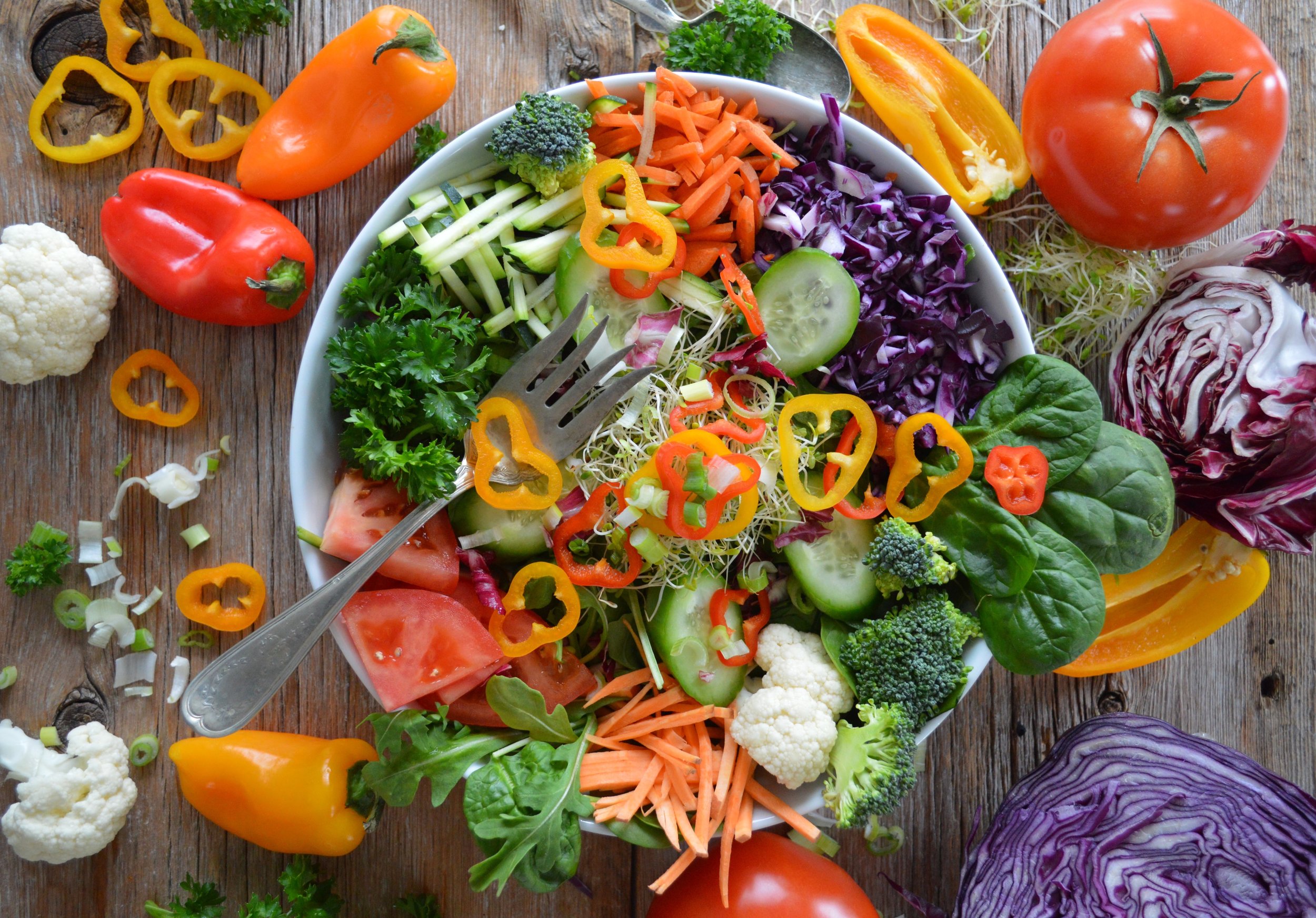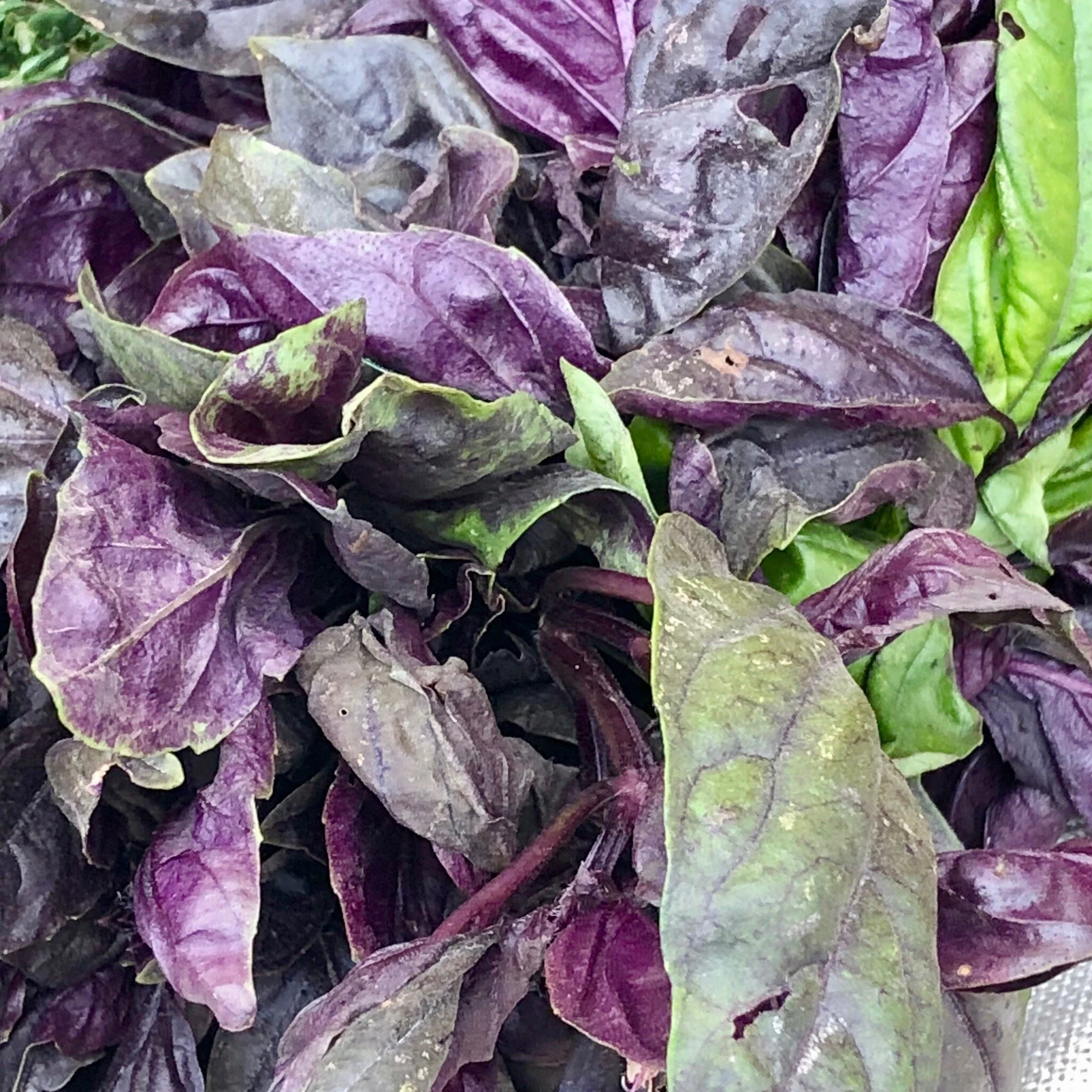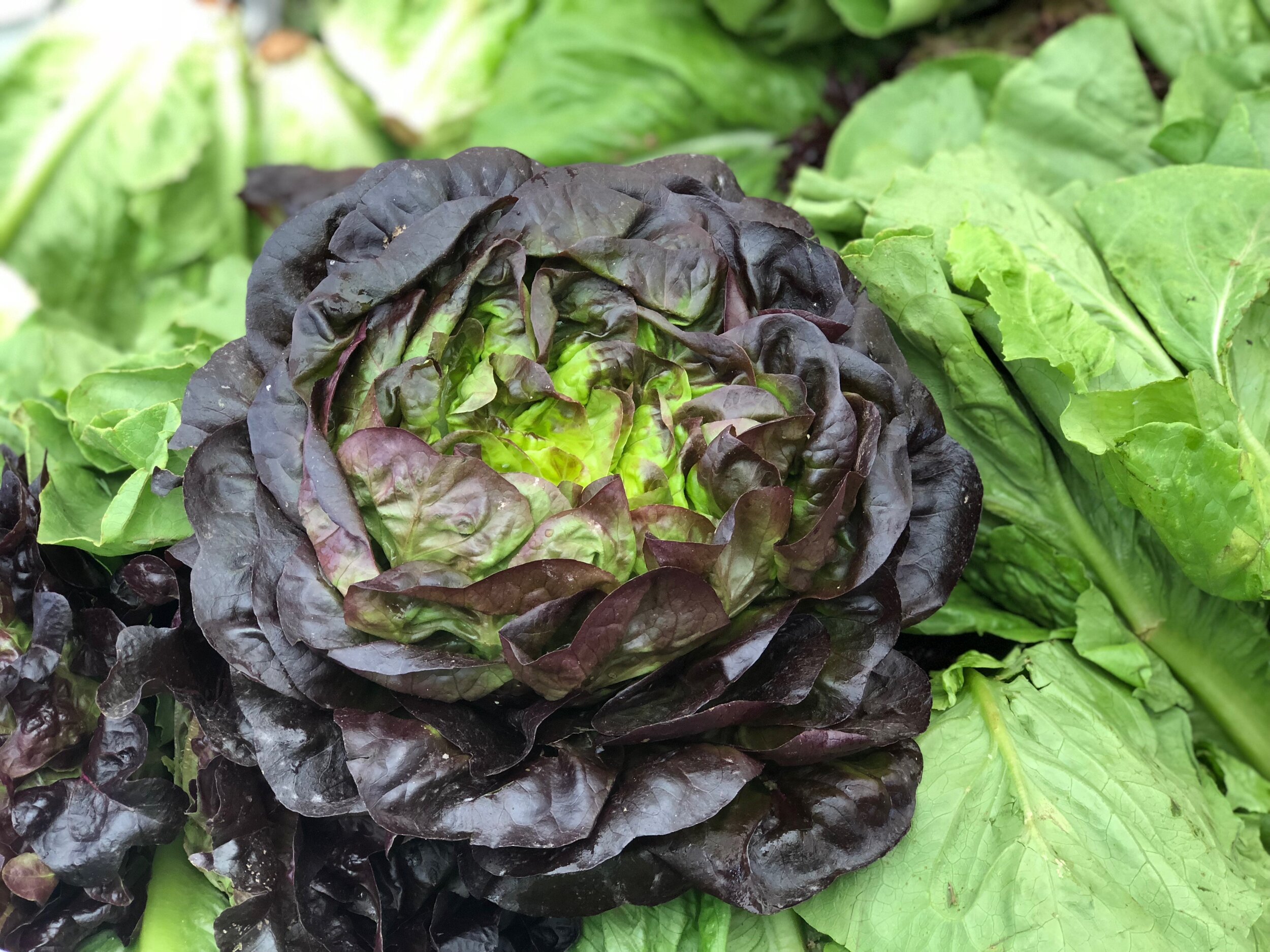The Color Purple: Meet the Anthocyanins
/I try to bring my wife and kids a new vegetable or variety as often as possible. There’s fun in the discovery and the ensuing culinary experimentation. At the very least, it results in memorable dinnertime conversation. For Rosh Hashanah, we got two new fruits: a “paper shell” pomegranate, which looks like an albino version of the familiar red pom; and a sapote, which, after 3 weeks, is still waiting to ripen in our kitchen!
Autumn is the time when so many fascinating new fruits and vegetables spring into season. All the incredible hues that we’ve seen around the farmer’s market this season give new meaning to the term “fall colors”: red, white, pink, black, brown, yellow, orange.
And purple. Lots and lots of purple.
Purple means the plant contains anthocyanins, a flavonoid antioxidant that also manifests as red, blue or black. This is the same compound that gives blueberries its hue.
This week, we found purple beans, purple basil and Salanova lettuce.
Purple Beans
Beneath the royal purple sheen, purple beans are green beans or wax beans in disguise. They are sometimes referred to as Royal Burgundy and Royal Purple.
Sadly, the purple color fades when the beans are cooked, revealing an ordinary-looking pale lime bean. After all the buildup around this novelty of a bean, my kids were less than wowed when the plate of ordinary-looking beans showed up at the dinner table. But flavorful they were!
Next time, we will steam them or eat them raw to retain the purple color.
Purple “Opal” Basil
The purple “opal” basil was a hit with the kids. Purple basil, you may ask? Well yes, and strikingly so: The leaves are variegated deep purple and green, giving it a gorgeous color profile. The taste is reminiscent of anise or fennel, slightly more bitter and savory than traditional green basil. It is intensely aromatic.
Needless to say, my kids competed on who could eat the most purple basil leaves at one sitting.
Beyond dinner table food contests, where else can this honorable herb be used? As with green basil, the purple opal variety has medicinal uses as well:
As a tea to calm the digestive tract
As a nausea remedy
Interestingly, it is often grown next to tomatoes, as it repels tomato pests. Who knew that this common culinary combination – tomatoes and basil – could be rooted in nature?!
Salanova Lettuce
What can possibly be exciting about a lettuce? It’s among the most common salad vegetables around. Yet there are so many varieties: iceberg, romaine, red leaf and butter, for instance. But it’s no surprise that some of the more unusual varieties can be found at local farmer’s markets. Among them is Salanova lettuce, which you can get from Sunrise Organic Farms at the Larchmont Farmer’s Market.
Salanova lettuce is relatively new on the market. It resembles an oversized baby lettuce. This red-leafed variety was first sold in 2005. (The Washington Post had a fascinating article about it a few years back.) It’s crunchy like an iceberg lettuce but with a mild, buttery flavor. The burgundy-colored leaves contain anthocyanins.
It is also incredibly efficient to prepare and serve Salanova:
With most lettuces, the leaves are joined around a central core and must be peeled off layer by layer. But Salanova’s leaves are all joined at the base. Just cut off the base and all the leaves fall into a pile, ready to be tossed into a famil-sized salad.
How convenient! We think so too.
Your Turn: What Interesting New Fruits Or Veggies Have You Tried Lately?
I’d love to turn the culinary tables on you, my readers:
What interesting new fruits or vegetables have you tried this season? What new fruits did you feature on your Rosh Hashanah table recently? How did your kids react to them?





